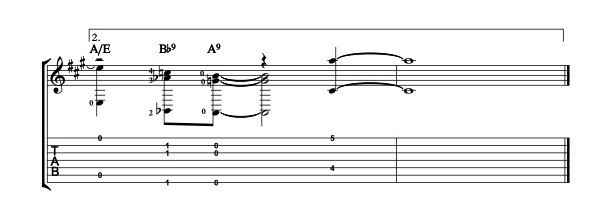Unveiling the Depths of 7 String Guitar Counterpoint
As a devoted fingerstyle guitarist, I’ve always been captivated by the rich texture of two-line counterpoint. The 7 string guitar, with its expanded range, becomes an exceptional canvas for this intricate technique. For this exploration, I favor the low A tuning for the 7th string. This tuning unlocks a couple of crucial lower notes that the standard low B tuning simply can’t reach, expanding the bass register and harmonic possibilities.
When notating music for the 7 string guitar, especially in the lower register, there’s a decision to be made: bass clef or treble clef with 8vb indication? I’ve opted for treble clef, writing the notes at their actual octave. While bass clef might seem intuitive given the lower tones, using treble clef on the proper octave maintains readability, especially for guitarists accustomed to this notation. However, if navigating ledger lines becomes challenging, focusing on the chord symbols and tablature (TAB) will readily clarify those deeper bass notes. “Down Low Blues” seemed a fitting title for this piece, reflecting its exploration of the lower register.
My approach to crafting two-line counterpoint typically begins with the bass line. I envision the foundational movement first, and then weave a melody on top. This process often starts with improvisation, letting the bass and melody interact freely. As certain melodic ideas emerge and resonate, I then commit them to paper. This organic method is precisely how “Down Low Blues” took shape. Echoes of New Orleans-style jazz permeated the developing lines, and I embraced this influence, consciously building upon those rhythmic and harmonic ideas. In crafting the bass line, I deliberately employed chord inversions whenever possible. This technique ensures smooth voice leading and creates compelling transitions into chord roots, adding harmonic sophistication.
A prime example of a concept I frequently utilize is contrary motion, evident right from the pickup measure. In bar 2, over the D#dim7 chord, I couldn’t resist enriching the harmony by voicing out the chord more fully. You’ll observe this approach recurring in bars 5, 9, 10, and 12, adding depth and harmonic color. Harmonically, the progression remains within the familiar landscape of a blues progression until bar 7, where the C#/E# chord introduces a subtle shift. This chord functions as the V7 of F#7, which is the chord that follows in the progression. The F#7, in turn, acts as the V7 of B9, and finally, the B9 serves as the V7 of E7. This sequence unveils a chain of Dominant 7th chords progressing in cycle 4 root motion, showcasing extended and secondary dominants and adding harmonic interest. The contrary motion principle is strikingly apparent in bar 11, enhancing the interplay between the bass and melody. On the last beat of bar 11, the bass line subtly hints at a D#dim7, creating a fleeting harmonic tension. Syncopation, a rhythmic interplay between the bass line and melody, is most prominent in the initial pickup measure and again in bar 11, adding rhythmic drive and complexity.
 A musical notation titled Down Low Blues 4, showing a jazz piece written for seven string guitar with counterpoint lines.
A musical notation titled Down Low Blues 4, showing a jazz piece written for seven string guitar with counterpoint lines.
In the second ending, which serves as the final bar, a captivating overlapping effect emerges. The initial three notes of the A9 chord are sounded, followed by a 3rd and a high root added subsequently, creating a layered harmonic texture. In the accompanying video performance, I chose to elevate that 3rd and root up an octave, further expanding the sonic range and creating a richer final chord.
I sincerely hope that exploring and playing through this etude proves both enjoyable and insightful. May it serve as a catalyst, guiding you towards new avenues of exploration and study in your own musical journey. For those seeking further lessons in this contrapuntal style and other guitar techniques, I offer a comprehensive collection of lessons available on Mikesmasterclasses.com.
